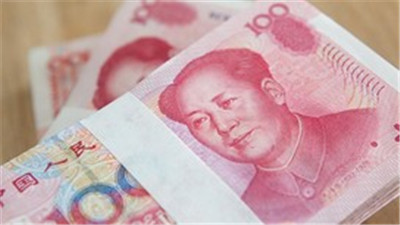(单词翻译:单击)
China’s renminbi has become the main currency for payments between China and the rest of the Asia-Pacific region, more than tripling in use over the past three years and outstripping the Japanese yen, the US dollar and the Hong Kong dollar in the process, according to data from the clearing system, Swift.
清算系统“环球同业银行金融电讯协会”(Swift)的数据显示,人民币已经成为中国与亚太其他地区之间最主要的支付货币,过去三年间支付量增加了3倍多,超过了日元、美元和港币。
The shift demonstrates that the Asia-Pacific region is at the forefront of the renminbi’s gathering acceptance as a currency for international trade settlement and investment. The Chinese currency was used in January-April for 31 per cent of payments between China (including Hong Kong) and the rest of the Asia-Pacific region, up from 7 per cent back in April 2012, Swift said.
这种转变表明,亚太地区是人民币提升作为全球贸易结算和投资货币接受度的最前线。Swift称,今年1-4月期间,在中国(包括香港)与亚太其他地区的支付中,使用人民币的比例达到31%,较2012年4月时的7%大幅提升。

The currency’s ascent came mostly at the expense of the US dollar, which was used in just 12.3 per cent of payments in April, down from 21.7 per cent in April 2012, Swift figures show. The yen and the Hong Kong dollar were also displaced, though to a lesser degree, by the rise of the renminbi (see table).
Swift的数据显示,人民币使用比例上升主要影响美元,后者在4月的支付中占比仅为12.3%,远低于2012年4月时的21.7%。日元和港币的使用比例也有所下降。
Singapore, Taiwan and South Korea are now using the renminbi for the majority of their payments with China, according to Swift, while the recent induction of clearing centres in Malaysia, Thailand and Australia should underpin the trend. Out of the 26 countries in the region, only nine are “low users” — places that use the renminbi for less than 10 per cent of their transactions with China, down from 19 in 2012.
Swift表示,新加坡、台湾和韩国如今在与中国大陆的大多数支付中都使用人民币。近期在马来西亚、泰国和澳大利亚设立人民币清算中心应会支撑这一趋势。在亚太地区26个国家,仅有9个国家为“低用户”地区(在与中国的交易中使用人民币的比例不足10%),较2012年的19个国家大幅减少。
Increasingly, it is investment rather than trade that drives the renminbi’s popularity. The opening of the Shanghai-Hong Kong Stock Connect, which allows offshore investors to use renminbi to invest in Shanghai’s A-share market, has underpinned demand, while a 68 per cent year-on-year increase in foreign investors’ holdings of domestic Chinese bonds during 2014 has also spurred demand.
投资、而非贸易日益成为推动人民币普及的因素。“沪港通”允许境外投资者使用人民币投资上海A股市场,它的开通有力支撑了对人民币的需求,同时2014年境外投资者持有的中国国内债券同比增长68%,这也刺激了需求。
Such overseas interest in domestic Chinese bonds is expected to continue, say fund managers, because the yields available are far superior to those that characterise fixed-income opportunities in Europe, Japan and elsewhere in developed markets.
基金管理公司称,由于中国债券的收益率远高于欧洲、日本及其他发达市场以固定收益机会为特点的债券,预计境外投资者对中国国内债券市场的兴趣将继续增加。
The China Universal Enhanced Bond Fund, for example, returned 13.12 per cent in 2014, according to China Universal, a Chinese asset manager.
例如,中国资产管理公司汇添富(China Universal)表示,2014年汇添富增强收益债券基金(China Universal Enhanced Bond Fund)的收益率为13.12%。
“We are definitely seeing increasing interest from European investors, both retail and institutional, who are hunting for yield in a world that is not really delivering their return targets,” said Christopher Gunns, a managing director at China Universal.
“我们肯定会看到欧洲投资者日益浓厚的兴趣,无论是散户投资者还是机构投资者,他们如今正在一个无法真正实现其收益目标的世界里寻找收益率,”汇添富的董事总经理克里斯托弗•冈恩斯(Christopher Gunns)称。
In addition, foreign investors currently hold only a tiny share, at 1.9 per cent or Rmb672bn, of China’s total onshore bond market, suggesting ample room to boost their involvement providing that Beijing approves sufficient investment quotas.
另外,在中国整个在岸债券市场中,目前境外投资者持有的份额还非常小,仅为1.9%或6720亿人民币。这表明,如果北京方面批准足够的投资额度,境外投资者的参与度还有巨大提升空间。


